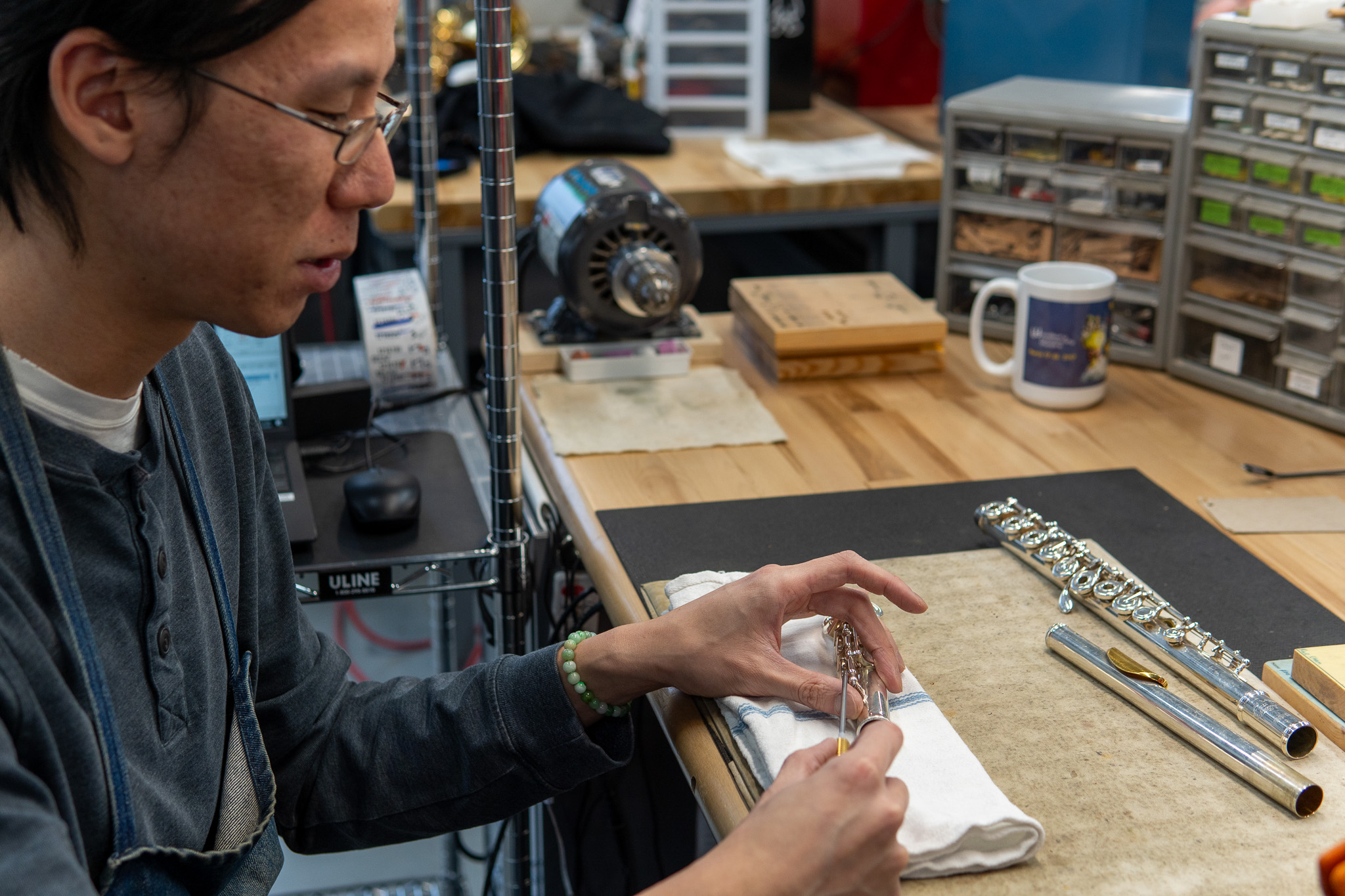Instrument Maintenance Tips – Winter Break Edition
Instrument Maintenance Tips – Winter Break Edition
Whether you are intentionally taking some time away from your instrument over the holidays or have been playing every single day for the past week and a half, now is a great time to give your instrument some much-needed TLC. We recommend having your instrument checked by a professional every six months. If it hasn’t been that long yet, follow these tips to maintain your instrument until your next tune-up!
- If your instrument is broken, have a professional inspect it. Anything from loose bracings, broken keys, to a warped bridge—we will take care of it for you! Even though winter break is almost over, it isn’t too late to bring your instrument in for repair. We will get you checked into our system and can even provide you with a loaner to take back to school while we work on the repairs. Once your instrument is playing as good as new, our district managers will work with your music teacher to get the loaner swapped out and reunite you with your instrument.
- Don’t leave your instrument in the cold car! To and from school, maybe a quick stop to run an errand or two isn’t the end of the world, but prolonged exposure to cold is not good for any instrument, especially dangerous for string instruments. Brass instruments can be fine if left in the car on occasion, but it is never recommended to move a slide or valve while the instrument is too cold or even frozen. If this happens, always wait for the instrument to slowly come back up to temperature before you start playing. If a string instrument is exposed to cold temperatures, have your instrument inspected to make sure no seams were opened, and the tuning pegs and bridge are still intact.
- Give your instrument a bath – If you play a brass instrument (Trumpet, Trombone, French Horn, Tuba, Euphonium), now is a great time to give your instrument a “bath”! Start by filling up a bathtub or utility sink just enough to submerge your instrument in water. Ensure the water is lukewarm; if it’s too hot, it might damage or strip off the protective clear lacquer on your instrument. Before submerging your instrument, remove all tuning slides, valves, and valve caps. Add a few drops of a mild detergent like Dawn dish soap, which will help break down any grease or grime build-up. Keep in mind that felts and corks should stay dry during this process, so do NOT submerge them but keep them off to the side. Once your instrument has soaked for about 10 minutes or so, rinse off any excess soap and brush out your slides and valves (being careful not to get the felts wet), and then let the instrument air dry. Once dry, lubricate your slides and valves, and you should be ready to put the instrument back together!
- For woodwinds, on your key rods, make sure that all your screws are securely placed but not too tight. Having a small screwdriver set in your case might not be a bad idea if you feel any loose screws on the go. If your pads are looking dirty or sticky, consider stopping in and picking up some Pad Paper. But if you’re in a pinch, a clean piece of paper or a crisp dollar bill will do the job. Simply take the paper and place it between the tone hole and the pad, press down evenly, and then slide the paper out while the pad is down. Repeat the process on any other noisy pads.
Hopefully, these tips will have you ready to go for the new school year! A little time away from practicing never hurt anyone… at least we think so? But if you do need to take a break from playing, make sure you take the time to give your instrument the TLC it needs to keep you sounding as great as possible!


No Comments